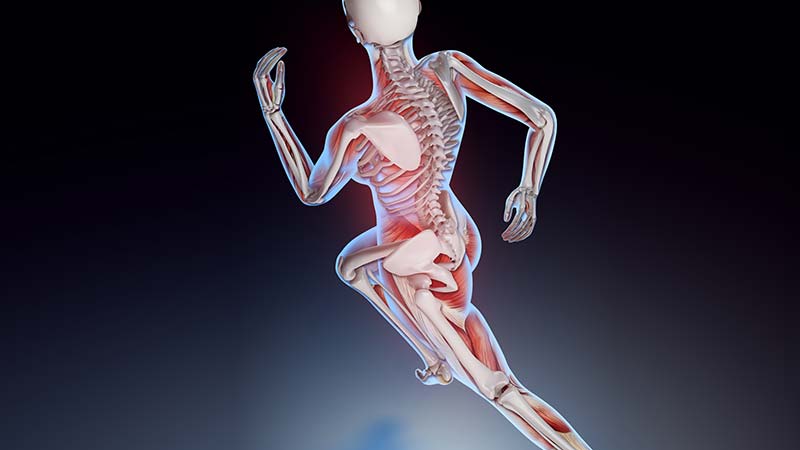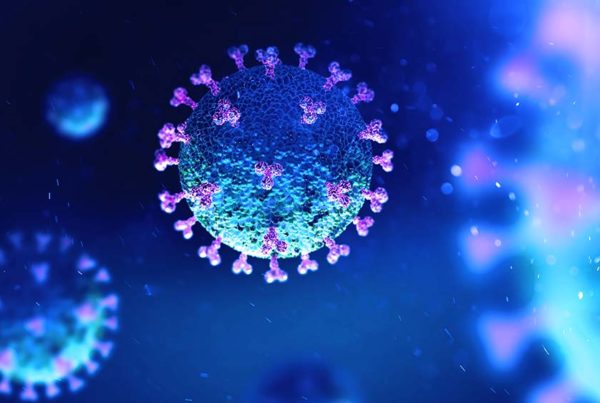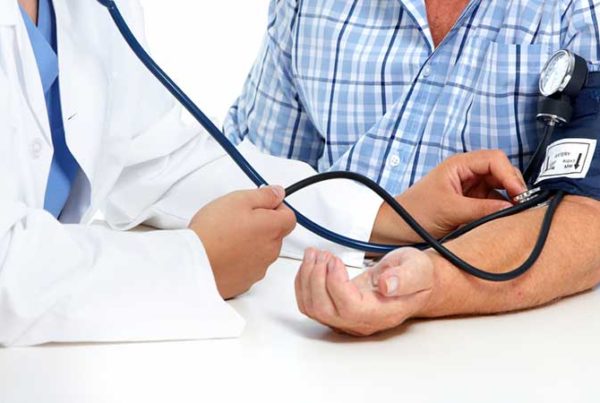
New research continues to show the close relationship between our muscles and bones — when one is injured, so goes the other. Along with tendons, ligaments, joints and cartilage, these structures do more than merely keep us moving. Muscles and bones also use hormones to communicate with each other, and other systems throughout the body.
Muscles and bones are part of an incredibly complex and holistic system of hormones, nerves, and other tissues that communicate in complex ways we’ve only just begun to understand.
Whether riding our bikes, running, walking or just sitting and reading — and even while sleeping — these activities employ ongoing muscle-bone crosstalk. In addition to moving together, when one is injured, each can affect the other. Muscle and bone loss in aging, which begins before age 40, is one commonly known problem.
We learn about the body in a mechanistic, reductionist way. But all systems are connected and work in conjunction with each other. It’s called holism. Muscle-bone crosstalk is one example.
The musculoskeletal system, as it’s long been called, includes tendons, ligaments, cartilage, joints, fascia, and other connective tissue along with blood and lymph vessels and nervous tissue. In the last decade, in addition to the mechanical benefits of muscles, an important biochemical relationship between them and the other organs of the body has become an intense topic of research. Along with their physical properties, muscles and bones have important biochemical ones, and are considered endocrine glands.
I’ve been writing about the important discoveries of hormone release during muscle contraction for many years, and felt an update was in order. The topic has implication not only in research and academia, but for clinicians who can use it to help us, and for everyone to incorporate into their lifestyle.
Muscles and bones release hormones that communicate with each other, as well as the brain and quite possibly everything else in our bodies. Muscle and bone mass, and let’s not forget the teeth, are strongly related to each other throughout aging, in maintenance and repair, beginning from before birth, where they shared close cellular origins and genetic relationships.
Let’s consider a bone fracture. The cause is often associated with concurrent muscle damage, whether from a fall or a seemingly non-traumatic one. Both muscles and bones are rendered dysfunctional until healing occurs. But better muscle function is associated with improved bone healing. This is certainly associated with muscle contractions stimulating bone activity, but separately, the biochemical communication from muscle to bone appears to play an important role too.
Muscles play dominant roles in preventing bone injuries, including falls. With a reduction in muscle mass and strength, muscle-hormone communication that normally helps bones, may also be lessened. This may be one reason age-related muscle loss, noticeable by age 40 if not sooner, may impair aging bones.
In addition, weaker bones or muscles may release factors that negatively influence the other. It’s not uncommon for an individual with muscle or bone loss during aging, to the point of sarcopenia or osteoporosis, to also have the other. This is due to both mechanical and biochemical influences of muscle on bone, and visa-versa.
Although bone mass density is an important factor in fracture risk assessment, including that of serious vertebral fractures, bone density value alone (commonly in the form of a T-score index) is only one factor. Muscle function needs evaluation too, as weak muscles can significantly predispose one to bone fractures. Muscle testing by a practitioner, and handgrip strength (see below) easily performed at home, are two ways this is accomplished.
A loss of normal height, low vitamin D and K, low protein intake, a previous fracture, other hormone imbalance and side effects of prescription drugs can also reduce bone and muscle function, increasing the risk for fractures.
What can you do to help muscle-bone crosstalk, and improve the whole musculoskeletal system? One key is balanced physical activity — avoid too much or too little of it. Spending adequate time in the sun and, important dietary factors that regulate chronic inflammation are just as important. Excess body fat is also associated with bone-muscle impairment.
We already know a lot about being healthy and fit — maintaining excellent lifestyle habits is the ultimate way to better muscles and bones.
Handgrip strength tests the whole body
As a fundamental element of a complete physical examination for most people, a grip-strength test measures the maximum isometric strength of the hand and forearm muscles. But crucially, grip strength is a reflection of whole body function. Studies show that grip strength has a strong correlation with various aspects of health and fitness, including nutritional status, body fat, full-body muscle mass, athletic performance, and is a predictor of overall mortality.
Grip strength is usually reduced if you’re overtrained, sick, injured, or otherwise unhealthy, or have muscle weakness, even in other areas of the body. Conversely, improvements in grip strength can signify training success, as well as recovery from overtraining, injury, or significant illness.
The test is best conducted with a device called a grip dynamometer. This small machine that you squeeze with your hand measures strength more precisely, in pounds or kilograms. These devices are readily available in stores or online.
Here are some guidelines on how to test your grip strength:
- Perform the test using the same hand each time (usually the most dominant hand, which is slightly stronger)
- Keep the wrist straight and with the elbow at right angles by the side of the body.
- Measure the same time of day. (First thing in the morning best.)
- Squeeze for up to 5 seconds.
- If gripping causes pain, avoid it.
- Perform monthly or as often as you want without getting obsessed.
There’s no particular number that’s “normal,” but consider that increasing grip strength typically means that you are getting healthier and more fit.








